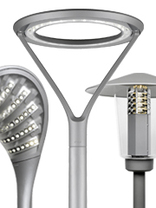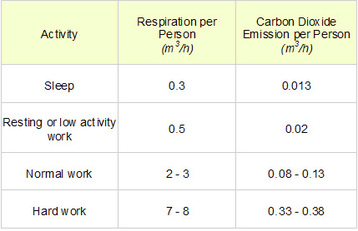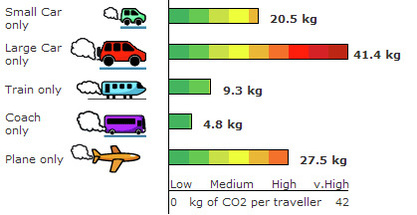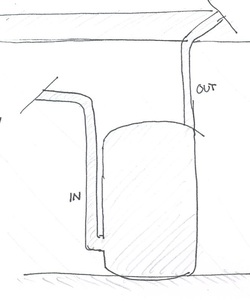Energy & CO2 within Buildings
PEOPLE, LIGHTS AND COMPUTERS
Many companies in the UK are becoming more aware of the impact of the impact they're having on the environment. By joining the governments Carbon Trust they commit to substantially reducing the total of CO2 of their firm.
The Carbon Trust look where they can make the maximum impact of change:
1. Cutting carbon emissions now:
To date, the Carbon Trust has helped its customers save around 23 million tonnes of carbon and around £1.4 billion in energy costs. So this goes to show that cutting back on CO2 emittions can not only be a massive benefit to the environment but save companies million of pounds.
2. Cutting future carbon emissions:
The Carbon Trust look where they can make the maximum impact of change:
1. Cutting carbon emissions now:
- By providing specialist advice and finance to help organisations cut carbon
- By setting standards for carbon reduction
To date, the Carbon Trust has helped its customers save around 23 million tonnes of carbon and around £1.4 billion in energy costs. So this goes to show that cutting back on CO2 emittions can not only be a massive benefit to the environment but save companies million of pounds.
2. Cutting future carbon emissions:
- By opening markets for low carbon technologies
- By leading industry collaborations to commercialise technologies
PEOPLE
People are a major contributing factor to CO2 emmisions. We can reduce the CO2 we produce from our activities. This can be changing the way we travel to and from work. Reducing your energy consumption
In the Home
On the move
People are a major contributing factor to CO2 emmisions. We can reduce the CO2 we produce from our activities. This can be changing the way we travel to and from work. Reducing your energy consumption
In the Home
- Fit energy saving light bulb
- Switching off appliances when not in use
- Closing curtains and blinds at dusk
On the move
- Car sharing
- Cycle or walk if your journey is 2 miles or less
- Properly inflate tyres

LED Lighting
LIGHTS
20 percent of the energy used in buildings is on lighting. This can be dramatically reduced by changing the bulb type from the standard incandescant (phased out) to either florescent to LED (light emitting diode). LED Lighting is an energy efficient alternative to convetional lamps. They also have a longer service life. However, they are currently more expensive and are inherently directional.
The option of automatically triggered lighting is an effective method of reducing energy consumption apposed from manually light switches.
20 percent of the energy used in buildings is on lighting. This can be dramatically reduced by changing the bulb type from the standard incandescant (phased out) to either florescent to LED (light emitting diode). LED Lighting is an energy efficient alternative to convetional lamps. They also have a longer service life. However, they are currently more expensive and are inherently directional.
The option of automatically triggered lighting is an effective method of reducing energy consumption apposed from manually light switches.

LCD vs CRT
COMPUTERS
After lighting computers and monitors have the highest energy consumtion in office buildings. It is estimated that the average PC is responsible for up to 0.5 tons of CO2 each year.It is also claimed that PCs produce same CO2 emissions as airlines (Source: The Indepenant 10 June 2007).
Energy consumption can be reduced by:
LCD monitors typically use 50 - 70% less energy when on compared to CRT(Cathode Ray Tube) monitors. This can equate to 100 kWh/year energy saving for typical 8 hour working day by choosing an LCD monitor instead of a CRT monitor.
Further details of the energy consumtion of computers can be found in the pdf below.
After lighting computers and monitors have the highest energy consumtion in office buildings. It is estimated that the average PC is responsible for up to 0.5 tons of CO2 each year.It is also claimed that PCs produce same CO2 emissions as airlines (Source: The Indepenant 10 June 2007).
Energy consumption can be reduced by:
- switching off termals manually when not in use,
- or by the use of PC power management technology for networked PC's (Source: Computer Weekly 19 September 2006)
LCD monitors typically use 50 - 70% less energy when on compared to CRT(Cathode Ray Tube) monitors. This can equate to 100 kWh/year energy saving for typical 8 hour working day by choosing an LCD monitor instead of a CRT monitor.
Further details of the energy consumtion of computers can be found in the pdf below.
Reducing the amount energy used is one way of cutting CO2 emotions. Another is reusing the waste thermal energy emitted from people, lighting and computers. In a typical large office space, the hot air is extracted and channeled to a heat storage unit. This can then be used on demand to heat other areas of the building.
For more advanced principles
| computer_energy_consumption.pdf |
USEFUL LINKS
- LED Lighting by Philips
- PC Power Management Software by Verdiem
- Act On CO2
- The Carbon Trust









